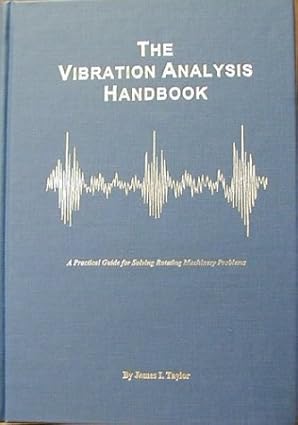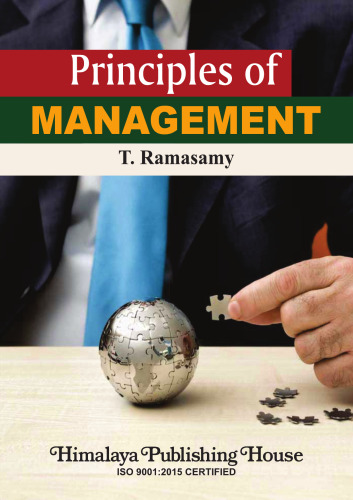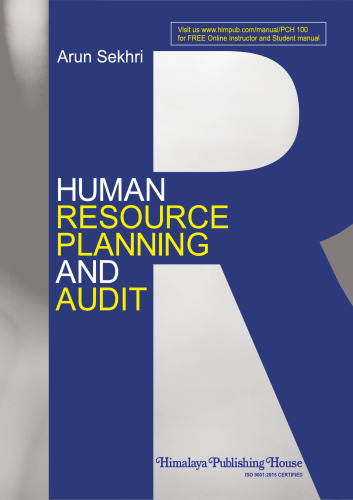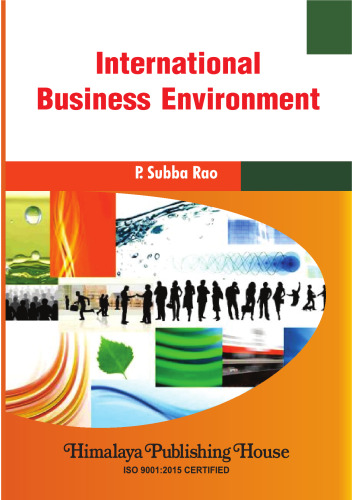1 C H A P T E R O N E How It Began Revolution, Intervention, Civil War, 1917–1921 In 1917 there occurred a great revolution in Russia. It unfolded in two stages one after the other in March and November of that year, and was followed by a long, bloody civil war, which cost the lives of millions of people and did not sputter out until 1921–1922. Many people believed that, in its breadth and world impact, the Russian Revolution eclipsed the 1789 revolution in France. The French overthrew Louis XVI and sent him to the guillotine. They put an end to the Bourbon monarchy, at least for a while, but they ac- cepted the nascent capitalist world as it was. The revolutionary leaders were mostly bourgeois. Property, wealth, money were left undisturbed unless they belonged to royalists. Even so, the other great European powers, all governed by kings and emperors, took fright because the revolution looked like spread- ing beyond the borders of France behind the bayonets of French revolution- ary armies. To defend their crowns and privileges, the great powers made war against the French revolutionary republic. They encouraged civil war in France, supported the royalist counter-revolution, and earnestly hoped for restoration of the monarchy in France. After the defeat of the upstart but formidable Napoleon Bonaparte, they succeeded temporarily in putting the Bourbons back on the throne. Much the same occurred in Russia after 1917, except that the hoped-for restoration did not materialize. The revolutionaries who took power in Rus- sia, the Bolsheviks, had great ambitions beyond those of their predecessors in France. They established a government based on workers’, soldiers’, and peasants’ councils, or Soviets. Their new government seized, nationalized, collectivized property, banks, money, the sacred icons of western capitalism, 2 • Chapter One all in the name of the proletarian and peasant masses. And this was only just a beginning, for the Bolsheviks were internationalists; they wanted to make a world socialist revolution. You can imagine the reaction of the great powers, then preoccupied in the mass slaughter of the First World War. Busy destroying one another, they looked up suddenly to see the evil genie of revolution out of its lamp again. With the exception of France, the kings and emperors of the European bel- ligerent powers were the spiritual descendants of the royalists who attempted to put down the bourgeois revolutionaries of France. Their instincts remained the same: to strike at the revolutionary Soviet government much as their predecessors had struck against revolutionary France after 1789. In a sense the Great War was an immense distraction which impeded the capitalist world from uniting to crush the Russian Revolution. After the Armistice in November 1918, all the powers, defeated and victorious alike, looked to their defenses against the spread of the revolutionary tide seeping out of Russia. Un- like their predecessors, however, the victorious Allies, mainly Britain, France, and the United States, failed to destroy the revolution in Russia, though not for want of trying. They dealt it hard, almost fatal blows and prevented its spread into Europe. It was at this point, in 1921, that Soviet Russia, battered but victorious, and the West, writ large, eyed and circled one another, neither able to strike a fatal blow, but still dreaming of it. By the end of the 1920s, those dreams were less vivid as the peril of each to the other began to fade. Who Led the Russian Revolution? The Bolsheviks, who seized power in Russia in November 1917, were theoretical Marxists. They had studied every aspect of the works of Fried- rich Engels and Karl Marx, the latter a brilliant and prolific 19th-century German philosopher, historian, and economist. In the 1880s and 1890s, the Bolsheviks called themselves Social Democrats and seemed relatively harmless, though the tsarist secret police, the Okhrana, tracked and jailed them. In 1903 the Social Democrats split into Mensheviks and Bolsheviks, soft- and hard-core revolutionaries. They debated Marxist ideas and devel- oped their own for making revolution in Russia, reversing the hated tsarist order. They tried for the first time in 1905, but lacked experience and close organizational ties to Russian workers and peasants. The Okhrana of course did what it could to stop them. All the important revolutionary leaders, V. I. Lenin, I. V. Stalin, L. D. Trotskii, and many others, spent time in tsarist jails or in exile. The first revolutionary upheaval of 1905 subsided. Trotskii was then the most prominent leader. Lenin was noticed only for his newspaper How It Began • 3 commentaries, and Stalin scarcely at all, an obscure Georgian operative ac- tive in the Caucasus. The revolution is dead, Trotskii declared afterward, long live the revolu- tion! 1905 was a dress rehearsal. Fresh opportunities would come, and the next time we will be ready. Ironically, the Bolsheviks were not ready when the next opportunity presented itself in 1917. Even Lenin failed to see it coming, though all of Europe, from Russia and the Ottoman Empire to the Channel ports, had been at war for two and a half years. This was not just any war, but a bloody, senseless massacre beyond the darkest imagination. Government censors on all sides hid the truth with propaganda about glorious victories and heroic, fearless soldiers. In France it was called bourrage de crâne—head stuffing, if you like—rubbish to hide the reality of mass slaughter at the front. The truth was that the battlefields were killing grounds cut up by trenches filled with mud, piss, and excrement while rotting corpses and body parts littered the no-man’s lands between opposing front lines. The bourrage de crâne worked for a while, but it was hard to explain away the long lists of dead, wounded, maimed, and missing. And “victories” produced little movement in the front lines which stretched across Belgium and France in the West. In 1916 a French soldier whose name was Henri Barbusse published a se- ries of feuilletons, or short stories, in the French newspaper L’Oeuvre, based on his experiences at the front. The stories were put together in a novel, Le feu, published in 1916, which won the prestigious Prix Goncourt and was published in Britain the following year as Under Fire. Barbusse’s comrades came from all walks of life, bakers, butchers, machinists, schoolteachers, peasants. They have unfamiliar names, Volpatte, Tirette, Barque, Biquet, Tulacque, Cocon, Pépin, but the reader gets to know them and thinks kindly of them. Most perished in the fighting, their bodies pierced by machine-gun bullets or blown apart and half buried by artillery rounds and shrapnel. From men and comrades whom we know, they became frighten- ing things, stiff, gutted, bloated, grotesque, from which the survivors averted their eyes. There was no glory in any of the stories of Barbusse or in real life at the front. It is a wonder that the censors passed Barbusse’s work; but it would have been pointless to hide the truth. The soldiers of Barbusse saw themselves as slaves. Herds of cattle, they said, led to slaughter by chauvins, super-patriots, and encouraged by comfort- able shopkeepers, war profiteers, and lounge lizards who skulked in Paris or London. For them, the war was merely so
چکیده فارسی
1 C H A P T E R O N E چگونه آغاز شد انقلاب، مداخله، جنگ داخلی، 1917-1921 در سال 1917 یک انقلاب بزرگ در روسیه رخ داد. این در دو مرحله یکی پس از دیگری در مارس و نوامبر همان سال آشکار شد و به دنبال آن یک جنگ داخلی خونین طولانی انجام شد که جان میلیونها نفر را گرفت و تا سالهای 1921-1922 از بین نرفت. بسیاری از مردم بر این باور بودند که انقلاب روسیه در وسعت و تأثیر جهانی خود، انقلاب 1789 فرانسه را تحت الشعاع قرار داد. فرانسوی ها لویی شانزدهم را سرنگون کردند و به گیوتین فرستادند. آنها حداقل برای مدتی به سلطنت بوربن پایان دادند، اما جهان سرمایه داری نوپا را همان طور که بود پذیرفتند. رهبران انقلابی عمدتاً بورژوا بودند. دارایی، ثروت، پول بدون مزاحمت باقی می ماند مگر اینکه متعلق به سلطنت طلبان باشد. با این حال، دیگر قدرتهای بزرگ اروپایی، که همگی توسط پادشاهان و امپراتوران اداره میشدند، ترسیدند زیرا به نظر میرسید که انقلاب در پشت سرنیزههای ارتشهای انقلابی فرانسه فراتر از مرزهای فرانسه گسترش یافته است. قدرت های بزرگ برای دفاع از تاج و امتیازات خود علیه جمهوری انقلابی فرانسه جنگ کردند. آنها جنگ داخلی را در فرانسه تشویق کردند، از ضد انقلاب سلطنتی حمایت کردند، و به طور جدی به احیای سلطنت در فرانسه امیدوار بودند. پس از شکست ناپلئون بناپارت نوپا اما مهیب، آنها موفق شدند به طور موقت بوربن ها را بر تخت سلطنت بازگردانند. پس از سال 1917 تقریباً همین اتفاق در روسیه رخ داد، با این تفاوت که بازسازی مورد انتظار محقق نشد. انقلابیونی که در روسیه قدرت را به دست گرفتند، بلشویک ها، جاه طلبی های بزرگی فراتر از جاه طلبی های پیشینیان خود در فرانسه داشتند. آنها حکومتی بر پایه شوراهای کارگری، سربازی و دهقانی یا شوراها تأسیس کردند. دولت جدید آنها اموال، بانک ها، پول، نمادهای مقدس سرمایه داری غربی را تصاحب کرد، ملی کرد، جمع کرد. و این فقط یک شروع بود، زیرا بلشویک ها انترناسیونالیست بودند. آنها می خواستند یک انقلاب سوسیالیستی جهانی ایجاد کنند. می توانید واکنش قدرت های بزرگ را تصور کنید که در آن زمان در کشتار دسته جمعی جنگ جهانی اول مشغول بودند. آنها که مشغول نابود کردن یکدیگر بودند، ناگهان به بالا نگاه کردند تا دوباره جن شیطانی انقلاب را از چراغ خود بیرون بیاورند. به استثنای فرانسه، پادشاهان و امپراتورهای قدرت های متخاصم اروپایی، نوادگان معنوی سلطنت طلبان بودند که سعی در سرکوب انقلابیون بورژوازی فرانسه داشتند. غرایز آنها یکسان باقی ماند: ضربه زدن به حکومت انقلابی شوروی همانگونه که پیشینیانشان به فرانسه انقلابی پس از 1789 ضربه زدند. به یک معنا، جنگ بزرگ یک حواس پرتی عظیم بود که مانع از اتحاد جهان سرمایه داری برای سرکوب انقلاب روسیه شد. پس از آتش بس در نوامبر 1918، همه قدرت ها، چه شکست خورده و چه پیروز، به دفاع از خود در برابر گسترش جزر و مد انقلابی که از روسیه نفوذ می کرد، نگاه کردند. اما برخلاف پیشینیان خود، متفقین پیروز، عمدتاً بریتانیا، فرانسه و ایالات متحده، نتوانستند انقلاب روسیه را نابود کنند، هرچند نه به دلیل تلاش. آنها ضربات سخت و تقریباً مهلکی به آن وارد کردند و از گسترش آن به اروپا جلوگیری کردند. در این نقطه، در سال 1921 بود که روسیه شوروی، شکست خورده اما پیروز، و غرب، بزرگ نوشتند، چشمان یکدیگر را دور زدند و نتوانستند ضربه مهلکی بزنند، اما همچنان رویای آن را داشتند. در پایان دهه 1920، این رویاها کمتر واضح بودند زیرا خطر هر یک برای دیگری شروع به محو شدن کرد. چه کسی انقلاب روسیه را رهبری کرد؟ بلشویک ها که در نوامبر 1917 قدرت را در روسیه به دست گرفتند، مارکسیست های نظری بودند. آنها تمام جنبه های آثار فریدریش انگلس و کارل مارکس را مطالعه کرده بودند، که دومی فیلسوف، مورخ و اقتصاددان آلمانی درخشان و پرکار قرن 19 بود. در دهه های 1880 و 1890، بلشویک ها خود را سوسیال دموکرات می خواندند و نسبتاً بی ضرر به نظر می رسیدند، اگرچه پلیس مخفی تزاری، اوخرانا، آنها را ردیابی و زندانی کرد. در سال 1903 سوسیال دموکرات ها به منشویک ها و بلشویک ها، انقلابیون نرم و سخت، تقسیم شدند. آنها در مورد ایده های مارکسیستی بحث کردند و ایده های خود را برای انقلاب در روسیه توسعه دادند و نظم منفور تزاری را وارونه کردند. آنها برای اولین بار در سال 1905 تلاش کردند، اما فاقد تجربه و روابط سازمانی نزدیک با کارگران و دهقانان روسی بودند. البته اخرانا هر چه در توان داشت برای متوقف کردن آنها انجام داد. همه رهبران مهم انقلابی، وی. آی. لنین، آی. وی. استالین، ال. د. تروتسکی و بسیاری دیگر، مدتی را در زندانهای تزاری یا در تبعید گذراندند. اولین تحولات انقلابی 1905 فروکش کرد. در آن زمان تروتسکی برجسته ترین رهبر بود. لنین فقط برای روزنامهاش چگونه آغاز شد مورد توجه قرار گرفت. تروتسکی بعداً اعلام کرد انقلاب مرده است، زنده باد انقلاب! 1905 یک تمرین لباس بود. فرصتهای تازهای میآیند و دفعه بعد آماده خواهیم بود. از قضا، بلشویک ها زمانی که فرصت بعدی در سال 1917 ایجاد شد، آماده نبودند. حتی لنین هم نتوانست آن را ببیند، اگرچه تمام اروپا، از روسیه و امپراتوری عثمانی تا بنادر مانش، برای دو سال و نیم درگیر جنگ بودند. . این فقط هر جنگی نبود، بلکه یک قتل عام خونین و بیمعنی فراتر از تاریکترین تصور بود. سانسورچیان دولتی از هر طرف حقیقت را با تبلیغات در مورد پیروزی های باشکوه و سربازان قهرمان و بی باک پنهان می کردند. در فرانسه به آن borrage de crâne می گفتند - اگر بخواهید پر کردن سر - زباله برای پنهان کردن واقعیت کشتار دسته جمعی در جبهه. حقیقت این بود که میدانهای نبرد، زمینهای کشتار بودند که توسط سنگرهایی پر از گل، حب و فضولات بریده شده بودند، در حالی که اجساد پوسیده و اعضای بدن، زمینهای غیرقانونی را در بین خطوط مقدم جبهه متضاد پر کرده بود. بوراژ د کران مدتی کار کرد، اما توضیح لیست طولانی کشتهها، مجروحان، معلولان و مفقودان سخت بود. و "پیروزی ها" تحرک کمی در خطوط مقدم که در سراسر بلژیک و فرانسه در غرب امتداد داشتند ایجاد کرد. در سال 1916 یک سرباز فرانسوی به نام هانری باربوس مجموعهای از فِیتونها یا داستانهای کوتاه را بر اساس تجربیاتش در جبهه در روزنامه فرانسوی L'Oeuvre منتشر کرد. این داستان ها در رمانی به نام Le feu که در سال 1916 منتشر شد، گرد هم آمدند که برنده جایزه معتبر گنکور شد و سال بعد با عنوان زیر آتش در بریتانیا منتشر شد. رفقای باربوس از همه اقشار بودند، نانوا، قصاب، ماشینکار، معلم مدرسه، دهقان. آنها نام های ناآشنا، Volpatte، Tirette، Barque، Biquet، Tulacque، Cocon، Pépin دارند، اما خواننده با آنها آشنا می شود و با مهربانی در مورد آنها فکر می کند. بیشتر آنها در نبرد کشته شدند، بدن آنها توسط گلوله های مسلسل سوراخ شد یا از هم جدا شد و توسط گلوله های توپ و ترکش نیمه مدفون شد. از مردان و رفقایی که ما میشناسیم، چیزهای ترسناکی شدند، سفت، روده، نفخ، وحشی، که بازماندگان چشمانشان را از آن دور کردند. هیچ شکوهی در هیچ یک از داستان های باربوس یا در زندگی واقعی در جبهه وجود نداشت. جای تعجب است که سانسورها از کار باربوس عبور کردند. اما پنهان کردن حقیقت بیهوده بود. سربازان باربوس خود را برده می دیدند. آنها گفتند که گله های گاو توسط شوون ها، فوق میهن پرستان، و تشویق مغازه داران راحت، سودجویان جنگ، و مارمولک های سالنی که در پاریس یا لندن جمجمه می کردند، منجر به سلاخی شدند. برای آنها، جنگ فقط همین بود
ادامه ...
بستن ...




![Our mission to the court of Marocco [Morocco] in 1880, under Sir John Drummond Hay - pdf Our mission to the court of Marocco [Morocco] in 1880, under Sir John Drummond Hay - pdf](https://dl.libsan.ir/images/1/12/112108724_694b9e9769312.jpg)





